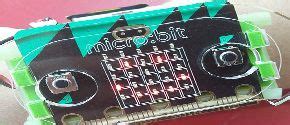Introduction to Micro:Bit
The BBC Micro:Bit is a pocket-sized, programmable computer designed to make learning and teaching easy and fun. It’s a great tool for beginners to start their coding journey and create amazing projects. In this article, we’ll explore 11 cool Micro:Bit Projects that are perfect for beginners.
What is a Micro:Bit?
A Micro:Bit is a small, programmable computer that measures 4cm by 5cm. It has a built-in LED display, buttons, sensors, and a Bluetooth antenna. The Micro:Bit can be programmed using a variety of programming languages, including Python, JavaScript, and Microsoft Block Editor.
Why Use a Micro:Bit?
There are many reasons why the Micro:Bit is a great tool for beginners:
- Easy to use: The Micro:Bit is designed to be easy to use, even for those with no prior coding experience.
- Versatile: The Micro:Bit can be used for a wide range of projects, from simple games to more complex applications.
- Affordable: The Micro:Bit is an affordable option for those looking to get started with coding and electronics.
- Educational: The Micro:Bit is a great tool for teaching coding and computational thinking skills.

11 Cool Micro:Bit Projects for Beginners
1. Rock, Paper, Scissors Game
Create a classic game of Rock, Paper, Scissors using the Micro:Bit. Players can select their choice using the buttons on the Micro:Bit, and the game will determine the winner based on the rules of the game.
2. Step Counter
Use the Micro:Bit’s accelerometer to create a step counter. The Micro:Bit can detect movement and keep track of the number of steps taken.
3. Temperature Sensor
Create a temperature sensor using the Micro:Bit’s built-in temperature sensor. The Micro:Bit can display the current temperature on its LED screen.
4. Music Maker
Create a music maker using the Micro:Bit’s built-in speaker. Players can use the buttons on the Micro:Bit to create different sounds and melodies.
5. Reaction Time Game
Create a reaction time game using the Micro:Bit’s LED display and buttons. The game will display a pattern on the LED screen, and players must repeat the pattern using the buttons as quickly as possible.
6. Compass
Create a compass using the Micro:Bit’s magnetometer. The Micro:Bit can detect the direction of the Earth’s magnetic field and display the direction on its LED screen.
7. Dice Roller
Create a digital dice roller using the Micro:Bit’s accelerometer. Players can shake the Micro:Bit to “roll” the dice, and the result will be displayed on the LED screen.
8. Light Sensor
Create a light sensor using the Micro:Bit’s light sensor. The Micro:Bit can detect the level of ambient light and display the result on its LED screen.
9. Morse Code Transmitter
Create a Morse code transmitter using the Micro:Bit’s LED display and button. Players can input a message using the button, and the Micro:Bit will display the message in Morse code on its LED screen.
10. Snake Game
Create a classic game of Snake using the Micro:Bit’s LED display and buttons. Players can control the snake using the buttons on the Micro:Bit and try to eat as many apples as possible without running into the walls or the snake’s own tail.
11. Scoreboard
Create a scoreboard using the Micro:Bit’s LED display. The Micro:Bit can keep track of scores for multiple players and display the current scores on its LED screen.
Table of Micro:Bit Features
| Feature | Description |
|---|---|
| LED Display | 5×5 LED matrix display |
| Buttons | Two programmable buttons (A and B) |
| Accelerometer | Detects movement and orientation |
| Magnetometer | Detects magnetic fields (e.g. for making a compass) |
| Light Sensor | Detects ambient light levels |
| Temperature Sensor | Measures ambient temperature |
| Bluetooth | Allows wireless communication with other devices |
| Pins | 3 GPIO (general-purpose input/output) pins, 3 dedicated pins, and power and ground |
Frequently Asked Questions (FAQ)
1. What programming languages can be used with the Micro:Bit?
The Micro:Bit can be programmed using a variety of programming languages, including:
– Python
– JavaScript
– Microsoft Block Editor (graphical programming)
– MicroPython
2. Can the Micro:Bit be used without a computer?
Yes, the Micro:Bit can be used without a computer once it has been programmed. Programs can be downloaded onto the Micro:Bit using a USB cable, and then the Micro:Bit can be used independently.
3. How do I connect the Micro:Bit to other devices?
The Micro:Bit can be connected to other devices using its built-in Bluetooth antenna. It can also be connected to other devices using the GPIO pins.
4. Can the Micro:Bit be used for more advanced projects?
Yes, the Micro:Bit can be used for more advanced projects as users become more experienced with programming and electronics. There are many resources available online for more advanced Micro:Bit projects.
5. Where can I find more Micro:Bit project ideas?
There are many resources available online for Micro:Bit project ideas, including:
– The official Micro:Bit website (https://microbit.org/)
– Micro:Bit project books and magazines
– Online communities and forums (e.g. Reddit, Adafruit)
– YouTube tutorials and videos
Conclusion
The BBC Micro:Bit is a fantastic tool for beginners to start their coding and electronics journey. With its easy-to-use interface, versatile features, and affordable price point, the Micro:Bit is a great choice for anyone looking to learn and create. The 11 cool projects outlined in this article are just the beginning – there are endless possibilities for what you can create with the Micro:Bit. So why not get started today and see what amazing things you can make?

No responses yet